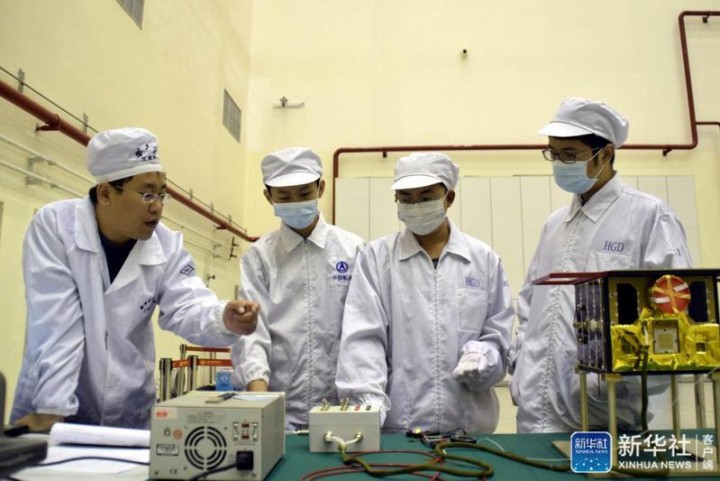On May 25, Xinhua News Agency reported that a scientific research team of HIT composed of "post-90s" and "post-00s", has been widely concerned about the dream pursuing story of exploring the vast universe. In a short time, the number of visitors exceeded 1 million. Now let's approach the Lilac Nano-Satellite Team.
New generation of China's Aerospace Power
——Lilac Student Nano-Satellite Team of HIT

Lilac Nano-Satellite Team from Harbin Institute of Technology is working. (Xinhua)
In Harbin in May, lilac blooms. Not long ago, the Nano-Satellite team of Harbin Institute of Technology named after lilac won the 24th "China Youth May 4th Medal Collective". The team, which is composed of "post-90s" and "Post-00" students, is less than 24 years old on average. They use their youth to explore the vast universe, known as the "new generation" in the Chinese aerospace team.
Dreamers Never Stop
In 2009, shortly after entering Harbin Institute of Technology, Wei Mingchuan joined the school radio club. That year, China's first amateur radio communication satellite "Hope I" was launched successfully, which gave birth to his impulse to develop small satellites.
His idea was unanimously supported by the school teachers. In 2012, Lilac Nano-Satellite Team was officially established. Relying on the Institute of Satellite Technology, the team will gather more than 100 people. They come from different disciplines, such as aerospace and science and technology, mechanics, computer science and technology, control engineering, mechanical engineering and so on. They have achieved collaborative innovation and intelligence gathering.
On September 20, 2015, the "Lilac-2" satellite developed by the team was successfully launched, creating a precedent for university students in China to independently design, develop and manage micro nano satellites.
Innovators Never Stop
Now, the team has independently developed " Lilac-1" and " Lilac-2", participated in the development of "Longjiang-1", "Longjiang-2", "Zhuhai-1" and new technology test satellite “E-Satellite “and other satellites.
Every innovation and breakthrough condense the efforts and efforts beyond the peers. In order to seize the opportunity to learn, some people went to the Radio Observatory in Xinjiang. In order to make progress, some people go back home to work in the school laboratory before their holidays are over. In the critical launch period, the team members only slept two hours a day.
Wu fan, who is responsible for attitude and orbit control during the launch of “Longjiang-2”. Wu Fan said that the "Longjiang-1" launched together with the "Longjiang-2" suddenly lost contact for some reason. Under the emergency, they sent more than 400 orders in an emergency to ensure the smooth operation of “Longjiang-2”. "If any instruction deviates slightly, it may fail." Wu Fan said.
At that time, Tamil, who was just a freshman, was mainly responsible for the design of the micro camera of “Longjiang-2”. The space allowed on the satellite is only thumb size. After repeated debugging, the camera finally meets the satellite technical requirements. In February 2019, this small camera took a picture called "the most beautiful moon-earth group photo" by foreign media.
Young Blood Never Stop
Many people do not know that behind every photo from space is an international project.
The team independently developed a network sharing platform that allows radio enthusiasts around the world to receive photos to meet their aspirations for outer space.
" These enthusiasts come from all over the world, for example: Netherlands, Japan, and Xinjiang Province, Guangdong Province, Beijing.Their contributions will be marked on each photo. " Wei Mingchuan said.
"My child is very interested in radio. I hope he can join your team one day." "inspired by you, I finally got into HIT" The story of "Lilac" has become a guide for more and more young people.
Today, from circuit design to camera upgrade, from software optimization to telemetry reception, the team continues to improve. They are undertaking the task of designing and developing the ASRTU satellite of the Sino-Russian Engineering Universities Union.
In this recruitment season, Harbin Institute of Technology will directly face high school graduates, launch the enrollment plan of "small satellite class" with the training mode of "master + team", and lead more children with aerospace enthusiasm to realize their dreams.


